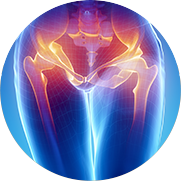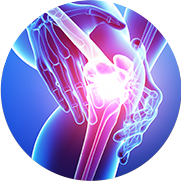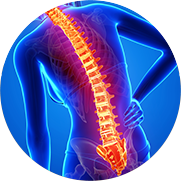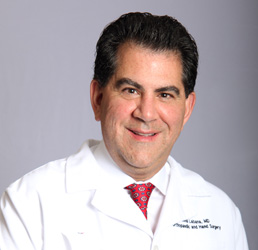What is elbow arthroscopy?
Arthroscopy is a minimally invasive procedure that allows a surgeon to look inside a joint using small incisions (portals) and instruments the width of a pencil. Most people are aware of knee and shoulder arthroscopy, but the elbow joint has many conditions that can be treated with arthroscopy as well. The elbow is the joint that connects the upper arm bone and the forearm bones. Because the incisions used with elbow arthroscopy are smaller and disrupt less soft tissue than conventional open surgery, pain, swelling and stiffness are minimized and recovery is often faster.
When is elbow arthroscopy performed?
The role of elbow arthroscopy in the treatment of elbow disorders has been dramatically increasing over the past few years. There are a variety of conditions for which elbow arthroscopy can be useful in diagnosis as well as treatment, including arthritis, loose bodies in the joint, tennis elbow, stiffness and fractures. Fractures and other injuries to the elbow can lead to significant stiffness of the joint. Stiff, contracted elbows are being released more frequently by elbow arthroscopy. Although not curable by arthroscopy, patients with arthritis of the elbow can enjoy significant improvement in symptoms and function after arthroscopy. After physical examination, X-rays or other studies such as CT or MRI scanning, your surgeon may recommend an arthroscopic procedure for treatment of your elbow disorder.
How is elbow arthroscopy performed?
The procedure is performed under general or regional anesthesia. A fiberoptic camera is inserted through a small incision, or ‘portal,’ in the elbow. The camera lens magnifies and projects the small structures in the elbow onto a television monitor, allowing the surgeon to accurately diagnose the condition. Several other small portals are used to allow the surgeon to place the camera in different positions to see different structures inside the joint and to place various small instruments into the joint to help treat various problems in the elbow. Sometimes elbow arthroscopy is combined with open procedures.
After elbow arthroscopy
After your arthroscopy, you may be placed into an elbow splint that allows full mobility of your hand. The period of immobilization will vary depending on what was performed at the time of surgery. Elevating the involved extremity is important to prevent excessive swelling and pain after your surgery. Certain conditions require that you begin therapy right away, and others may not require it at all. Often elbow arthroscopy is done as an ambulatory procedure, allowing the patient to go home the same day, but occasionally, depending on the condition, a hospital stay may be needed.
Risks and limitations
As with any surgery, elbow arthroscopy has risks. These include infection and potential damage to nerves and arteries. Stiffness may need to be addressed through post operative rehabilitation. Elbow arthroscopy is not appropriate for all elbow conditions and is dependent on the surgeon’s training, expertise and comfort level.
(c) 2011 American Society for Surgery of the Hand











